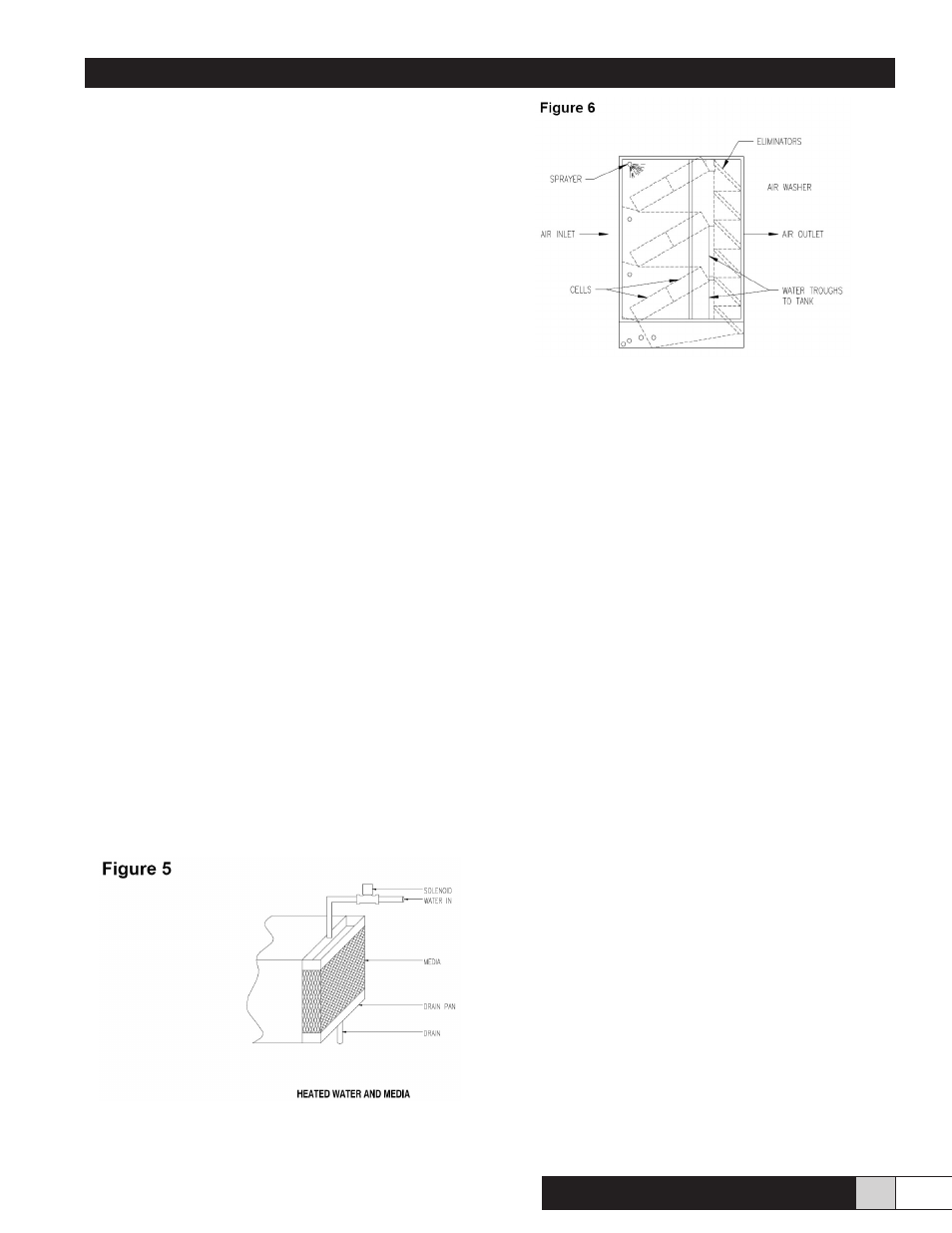Herrmidifier Load Calculator User Manual
Page 19

L o a d C a l c u l a t i o n G u i d e
L o a d C a l c u l a t i o n G u i d e
19
w w w. h e r r m i d i f i e r- h v a c . c o m
Evaporation
This process actually evaporates the water to the vapor state
before it is discharged into the air. No droplets of water enter
the humidified air. Minerals contained in the water are left be-
hind in the humidification equipment and must be removed
by periodic cleaning. No mineral fallout is experienced with
this type of equipment. Generally a bleedoff or blowdown
mechanism is built in to flush away concentrated minerals
and lengthen maintenance periods. Evaporative equipment
will work well on any quality of water.
Evaporation will occur off the surface on an open pan of wa-
ter or off a saturated sponge. Since it requires 1000 BTU’s to
evaporate one (1) pound of water, heat is often added to the
water or air to enhance evaporation. There are four types of
evaporative humidifiers: heated water and media, pan-coil,
heated air and media and air washers.
HEATED WATER AND MEDIA humidifiers use a wetted
media through which heated water is poured and air blown
through to pick up the moisture. Although effective, large
amounts of heated water and energy are poured down the
drain in the necessary constant blowdown process. These
units are usually placed on a supply duct and therefore add
to the static pressure and blower costs. Overall energy ef-
ficiency of this type of evaporative humidifier is very poor.
AIR WASHERS use the evaporative process by passing
air over a continuous film of water flowing over deflectors
which present a large surface of water in contact with the air.
The resulting surface evaporation raises the R.H. of the air.
Because of the evaporative cooling and their large size and
cost, air washers are usually used as evaporative coolers,
purifiers AND humidifiers. It is necessary that efficient “de-
mistors” be placed in the air stream after the washer section
to remove and drain any water droplets that may have be-
come entrained in the air stream. This often results in high
static loss across the washer. High levels of R.H. usually
cannot be attained by this method of humidification. (Upper
limit is about 55% R.H.)
Steam
This process injects live steam into the air to be humidified
either via manifold in a ducted air system, or direct discharge
into the area. Where good quality steam is available in suf-
ficient quantities, a central steam humidification system will
have a very low “first cost.” Where a steam boiler must be
installed for humidification, its first cost is comparable to oth-
er forms of humidification. A steam boiler for humidification
must be able to supply good quality steam with very little
droplet entrainment. Any droplet entrainment will result in
mineral clogging of the humidification equipment since these
droplets contain the same chemical makeup as the water in
the boiler.
A central steam humidifier consists of a condensate sepa-
rator (to remove slugs of condensate) and a distribution
manifold (for insertion in ducts) or outlet (for area disper-
sion). Generally the steam flows through the control value
into the separator manifold. This is where any solid water
particles fall out of the steam providing a good quality steam
for humidification. The Herrmidifier Herricane CS Series is
designed for low steam velocities in the distribution tubes
resulting in very low noise levels. The distribution tubes are
also engineered to return any condensate to the header. The
stainless steel nozzles receive their steam from the middle
of the distribution tube where the driest steam is available.
Care must be taken to ensure that any spitting, caused by
heavy slugs of condensate, will not damage duct work or
materials positioned beneath an area steam humidifier.
